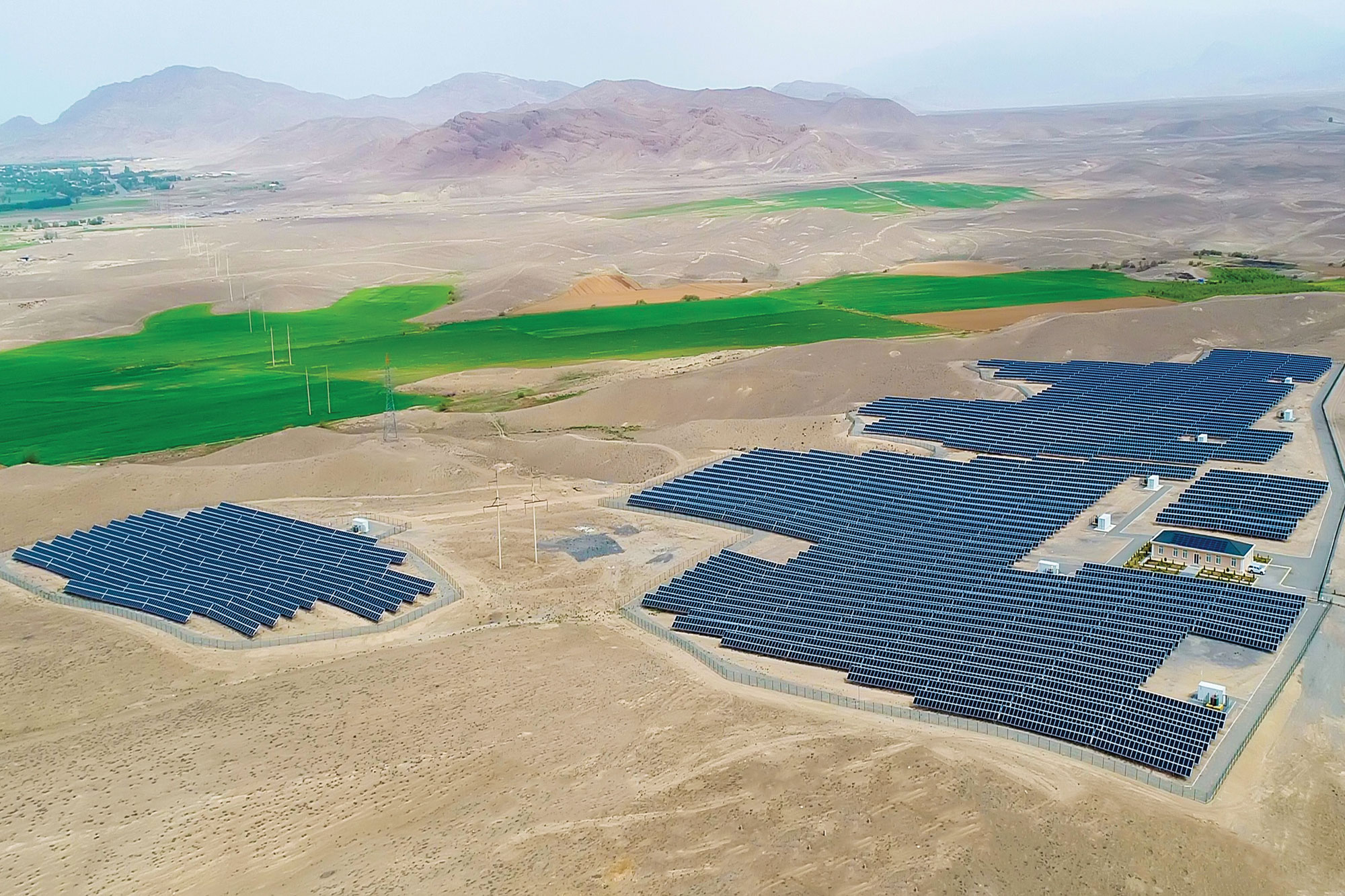Azerbaijan and BP have agreed upon the technical and commercial parameters of a solar power plant (SPP) to be built in Azerbaijan’s liberated Jabrayil district, Deputy Energy Minister Elnur Soltanov announced on Monday.
"We have settled it on very good terms. Now there are some technical issues left,” he said.
Soltanov added that in the future, the energy produced at the plant, dubbed Shafag (Dawn), will supply the Sangachal oil terminal after certain procedures are settled between BP and the Azerbaijani government.
On June 3, 2021, the Energy Ministry of Azerbaijan and BP signed an Implementation Agreement on cooperation in the evaluation and implementation of a project to build a 240-megawatt (MW) solar power plant in liberated Jabrayil.
Cooperation within the Implementation Agreement addresses the technical and commercial evaluation of the solar energy project, plant designing, financial allocations and the adoption of the final investment decision.
On June 4, 2022, the Energy Ministry and BP inked an Addendum to the Implementation in order to take the necessary next steps for the joint implementation of the 240-MW photovoltaic power station. The document outlines the measures that should expedite joint activities for realizing the "Shafag" Solar Power Plant project.
According to the Addendum, the application of the "Virtual Energy Transfer" business model is considered for securing effective technical and commercial solutions that would facilitate the project’s timely and proper implementation.
“Shafag” SPP is expected to come online sometime in 2026 as reflected in the "Action plan for the establishment of a ‘green energy’ zone in 2022-2026 in the liberated territories of the Republic of Azerbaijan" approved by the Cabinet of Ministers in 2021.
It will provide electricity for 150,000 households per annum, Tabriz Ammayev, the then Director of the State Agency for Renewable Energy Sources, said at the time. According to him, the plant will churn out more than 500 million kWh of electricity. In addition to the “Shafag” SPP, the construction of solar power plants in other liberated regions will be considered in order to meet the possible increase in electricity demand in the future, he said.
Estimates put the renewable energy potential of Azerbaijan at 37,000 MW — around 10,000 of which was unveiled after the liberation of the country’s territories from Armenian occupation in 2020.
The alternative energy potential of the liberated territories of Azerbaijan includes almost all types of renewable energy sources, including hydro, solar, wind, and geothermal.
The Fuzuli, Jabrayil, and Zangilan districts come in at number two after the Nakhchivan Autonomous Republic for their rich solar power resources. The solar radiation per square meter in these regions is reportedly amounted to 1600-1700 kW/h per year, while the total solar energy potential is estimated at 7,200 MW.
The wind energy potential of the liberated territories is especially prevalent in the Kalbajar and Lachin districts. According to data released by the Energy Ministry, the average annual wind speed in these territories reaches 10 meters per second. The potential of wind energy in the mountainous areas of the Karabakh region is estimated at 2,000 megawatts.
Meanwhile, there are also 4,000-5,000 cubic meters of thermal water per day in the territory of the Kalbajar, Lachin, and Shusha districts.
The Azerbaijani government has identified the transformation of the country’s Karabakh (Garabagh) region into a green energy zone as a priority within the ongoing reconstruction and development projects.







 Armenian sappers commenced on Monday mine-clearance operations in the territories adjacent to the Saint Mary Church in village of Voskepar (Armenia...
Armenian sappers commenced on Monday mine-clearance operations in the territories adjacent to the Saint Mary Church in village of Voskepar (Armenia...
 Iran and Pakistan have signed eight cooperation documents in various fields, and agreed to strengthen ties to fight terrorism in the region.
Iran and Pakistan have signed eight cooperation documents in various fields, and agreed to strengthen ties to fight terrorism in the region.
 President Aliyev emphasized the critical role of the North-South Transport Corridor in fostering transport cooperation between Azerbaijan and Russi...
President Aliyev emphasized the critical role of the North-South Transport Corridor in fostering transport cooperation between Azerbaijan and Russi...



